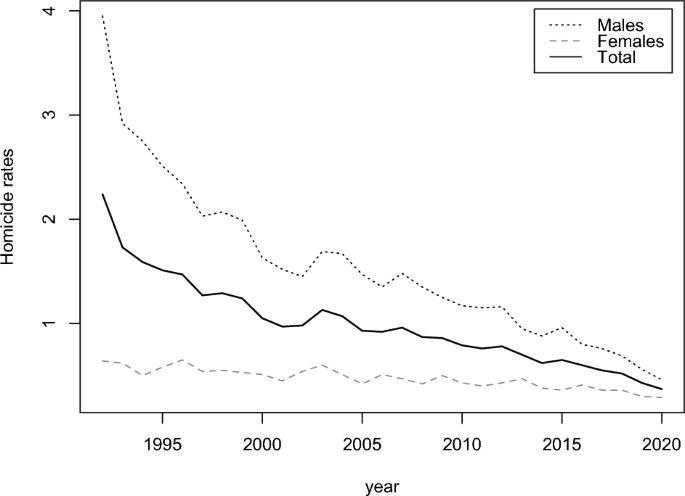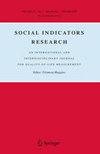意大利暴力侵害妇女行为分析中漏报模式的调查
IF 2.8
2区 社会学
Q1 SOCIAL SCIENCES, INTERDISCIPLINARY
引用次数: 0
摘要
对妇女的暴力行为仍然是最普遍和最持久的侵犯人权行为之一。尽管如此,关于这一基本上未被发现的现象的全面、可靠和最新的数字仍然存在重大差距。要对基于性别的暴力行为制定高效和有效的政策和法律对策,就必须有准确的数据。为量化性别暴力受害者人数而专门设计的调查在某一特定时间返回了流行率估计数,并评估了未发现暴力及其驱动因素的情况。然而,上一次意大利妇女安全调查是由国家统计局于2014年进行的。由于向警方报告的暴力事件的官方统计严重漏报,而且缺乏最近的调查数据,因此无法编制最新的流行率估计数。设计适合汇集来自不同来源的数据的特别技术,首先是官方警察报告,并解释报告不足的情况,对于理解和衡量对妇女的暴力行为,以恢复这一被严重低估的现象的现实情况并评估其范围至关重要。我们将2020年暴力报告的公开注册数据作为主要来源,通过引入贝叶斯模型,对观察到的数量进行补充,并使用一系列辅助信息,包括社会人口指标、1522热线电话数据和以前调查的患病率估计,同时使用协变量和外部信息明确建模报告过程,从而对意大利地区的性别暴力进行改进估计。我们建议使用统计模型来分析误报的数据,以从方法论的角度提高对问题的理解,并深入了解意大利这一现象的复杂动态。本文章由计算机程序翻译,如有差异,请以英文原文为准。

An Investigation of Models for Under-Reporting in the Analysis of Violence Against Women in Italy
Abstract Violence against women is still one of the most widespread and persistent violations of human rights. Despite this, a significant gap of comprehensive, reliable and up-to-date figures on such a largely uncovered phenomenon remains. To develop efficient and effective policy and legal responses to gender-based violence, accurate data are necessary. Surveys specifically designed to quantify the number of victims of gender violence return prevalence estimates at a given time, and assess the under-detection of violence and its drivers. However, the last Italian Women’s Safety Survey was conducted by ISTAT in 2014. Given the substantial under-reporting affecting official counts of violence reports to the police, and the lack of recent survey data, up-to-date prevalence estimates cannot be produced. Designing ad hoc techniques suitable to pool data arising from different sources, first of all official police reports, and accounting for the under-reporting, is crucial to understand and measure violence against women to return a realistic picture of this greatly underrated phenomenon and assess its scope. We use publicly available registry data on violence reports in 2020 as a primary source to provide improved estimates of gender violence in the Italian regions, by introducing a Bayesian model that supplements the observed counts with a pool of auxiliary information, including socio-demographic indicators, data on calls from 1522 helpline number and prevalence estimates from previous surveys, while explicitly modelling the reporting process using covariates and external information. We propose using statistical models for the analysis of misreported data to improve the understanding of the problem from a methodological point of view and to get insights into the complex dynamics of the phenomenon in Italy.
求助全文
通过发布文献求助,成功后即可免费获取论文全文。
去求助
来源期刊

Social Indicators Research
Multiple-
CiteScore
6.30
自引率
6.50%
发文量
174
期刊介绍:
Since its foundation in 1974, Social Indicators Research has become the leading journal on problems related to the measurement of all aspects of the quality of life. The journal continues to publish results of research on all aspects of the quality of life and includes studies that reflect developments in the field. It devotes special attention to studies on such topics as sustainability of quality of life, sustainable development, and the relationship between quality of life and sustainability. The topics represented in the journal cover and involve a variety of segmentations, such as social groups, spatial and temporal coordinates, population composition, and life domains. The journal presents empirical, philosophical and methodological studies that cover the entire spectrum of society and are devoted to giving evidences through indicators. It considers indicators in their different typologies, and gives special attention to indicators that are able to meet the need of understanding social realities and phenomena that are increasingly more complex, interrelated, interacted and dynamical. In addition, it presents studies aimed at defining new approaches in constructing indicators.
 求助内容:
求助内容: 应助结果提醒方式:
应助结果提醒方式:


